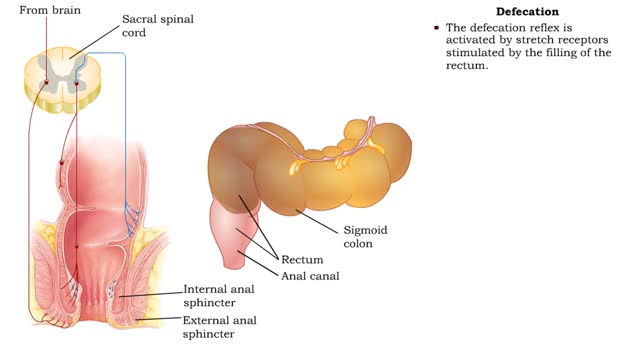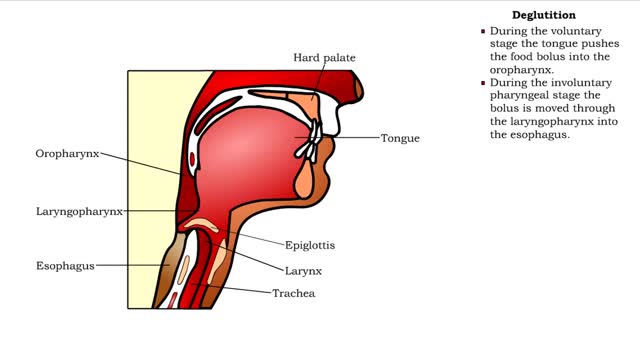Search Results
Results for: 'peristalsis'
Stomach peristalsis - Movement of Food Through the Small Intestine
By: HWC, Views: 11065
Peristalsis is a series of wave-like muscle contractions that moves food to different processing stations in the digestive tract. The process of peristalsis begins in the esophagus when a bolus of food is swallowed. The strong wave-like motions of the smooth muscle in the esophagus carry the food...
Haustral churning, Gastrocolic reflex and mass peristalsis & Defecation
By: HWC, Views: 11395
ŌĆó As the cecum becomes filled and distends, a local reflex causes: ŌĆó Closure of the ileocecal valve. ŌĆó Activation of haustral churning. ŌĆó Haustral churning mixes the chyme, which helps absorption of water, salts, and vitamins. ŌĆó Haustral churning propels the contents of the colo...
By: HWC, Views: 10598
Swallowing occurs in three stages: ŌĆó Voluntary stage in the mouth. ŌĆó Involuntary pharyngeal stage. ŌĆó Involuntary esophageal stage. ŌĆó During the voluntary stage the tongue pushes the food bolus into the oropharynx. ŌĆó During the involuntary pharyngeal stage the bolus is moved ...
Stomach peristalsis & Enterogastric reflex
By: HWC, Views: 10448
ŌĆó Food enters, distending the stomach. ŌĆó Stretch receptors activate enteric reflexes that promote peristaltic movements. ŌĆó These movements, called mixing waves, begin to mix the food with stomach secretions. ŌĆó Mixing waves force the digesting food (chyme) toward and through the pylo...
Barriers - eye structures, digestive mucosa, respiratory mucosa & genitourinary mucosa
By: HWC, Views: 11323
ŌĆó Eyebrows, eyelids, eyelashes and conjunctiva serve to trap microbes preventing their invasion. ŌĆó Tearing (lacrimation) is a protective mechanism that washes away microbes that attempt to enter the eyes. ŌĆó Salts, mucus, and lysozymes in tears neutralize substances and bacteria. ŌĆ...
Advertisement







